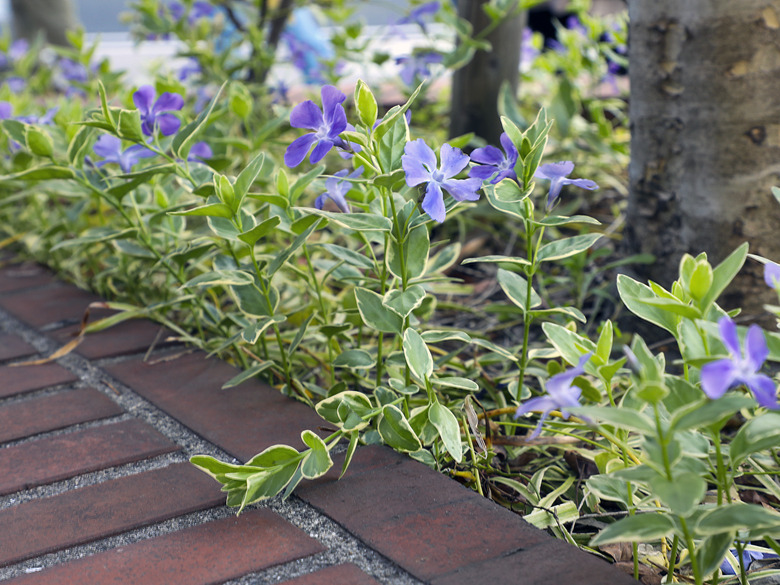All About Vinca
We may receive a commission on purchases made from links.
With a cute name like "periwinkle" and pretty indigo flowers, low-growing vinca shrubs offer a lot to love. These perennials are regularly used as evergreen ground cover and for good reason: They grow fast, don't mind shade, and establish rapidly. Every few years, vinca needs to be trimmed to keep it looking its best.
Meet the Periwinkle Plants
Meet the Periwinkle Plants
The periwinkle (Vinca minor/major) is an extremely popular ground cover, although it is very invasive. Natives of Europe, these short shrubs produce dark green foliage and dainty flowers in a bright shade of blue-lavender. They are a lovely color and appear not just in spring and early summer but also intermittently throughout the year.
The primary reason periwinkle is so widely used, however, is its tough nature. It tolerates high heat and full sun but also grows extremely well in almost complete shade. Periwinkle minor (USDA plant hardiness zones 4 through 8) grows to about 6 inches tall, and its long, trailing shoots spread in all directions. It produces leaves, dropping roots at the leaf nodes. This enables it to cover the space rapidly and even spread beyond the space.
Vinca major is taller, spreads faster, and is more invasive. It grows to 18 inches tall and spreads aggressively and indefinitely. It thrives in USDA zones 7 through 9.
Understanding the Periwinkle Shrub
Understanding the Periwinkle Shrub
Periwinkle is among the easiest shrubs to use for ground cover. Its incredible ability to develop quickly also makes it effective when planted on hillsides to prevent erosion. But it definitely has a downside: its tendency to spread beyond the area in which it was planted. It will move into adjacent land, whether that's your neighbor's property or a public park.
Periwinkle establishes quickly and forms a dense carpet of vegetation, completely blocking out other plants. Given its tendency to escape from cultivation, it often invades wild areas, where it excludes native plants. In open areas where the ground is disturbed, in roadside areas, and in shaded woods and park lands, periwinkle moves in. It can easily become the dominant understory in a previously wild environment. It is considered a toxic weed in many ecosystems.
Caring for Perennial Vinca
Caring for Perennial Vinca
It is easy to grow periwinkle. Plant seeds or starts in well-drained soil after adding compost and working it in. Keep the soil moist until the vinca establishes.
Once periwinkle is established as a ground cover in your yard, you will want to shear the plants every few years after their spring bloom. Shear them to 4 inches with pruning shears. It's a good idea to clip off new periwinkle sprigs if they show up at the very edge or outside the plants' allotted space.
